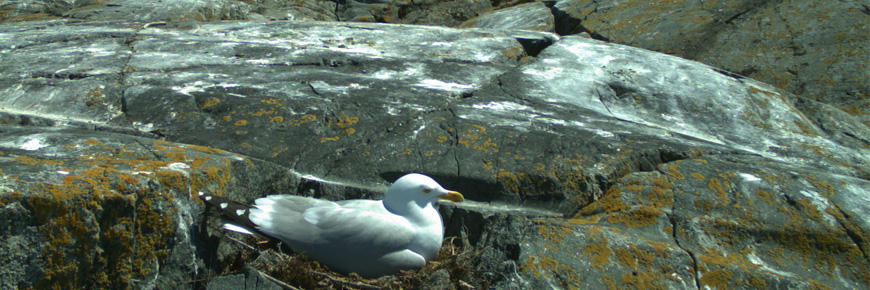
Assessing the impacts of diet on herring gulls
Pukaskwa National Park
This ongoing project is investigating factors contributing to declines in herring gull (Larus argentatus smithsonianus) populations in Pukaskwa National Park. Understanding these declines is important because gull populations are a vital part of the Ecological Integrity of Pukaskwa’s coastal ecosystems. Herring gulls are also used as an indicator species in the Great Lakes by Environment and Climate Change Canada’s Great Lakes Herring Gull Monitoring Program (GLHGMP) to which Pukaskwa National Park contributes.
Methodology
In May 2015 and 2016, herring gull eggs were collected in both northern and southern regions of Pukaskwa National Park. Herring gull population declines have been more severe in the park’s southern region.
Egg and clutch size: Egg size (length and breadth) was recorded along with clutch size (number of eggs per nest). These endpoints provide an indication of the resources available to the female gull during egg formation.
Diet: Collected eggs were transported to the National Wildlife Research Centre in Ottawa. Egg contents (yolk and albumen) were homogenized and stored frozen in the National Wildlife Specimen Bank. Egg samples were used for corticosterone (a stress hormone), fatty acid, and stable carbon and nitrogen isotope analysis. Egg corticosterone is a measure of stress in laying females. Fatty acids and stable isotopes provide an indication of bird diet. Other samples for assessing diet, i.e. regurgitated pellets containing undigestable food, were collected around nest sites for identification of food remains.
Incubation: Remote infrared digital cameras were installed at selected nest sites. Cameras took a photo each minute, 24 hours per day for weeks at a time. These photographs allowed an assessment of incubation attentiveness along with factors influencing nest success.
Results and discussion
Egg and clutch size: Herring gull egg size did not differ between the southern and northern regions of the park, but the eggs were smaller than those found on colonies on Lakes Erie and Ontario where food is abundant (information from GLHGMP). Clutch size in southern region was smaller than in the northern region of the park.
Diet: In both years, diet markers in eggs indicated that gulls nesting in the southern region of the park were more reliant on natural foods than birds in northern region. Furthermore, anthropogenic foods were only found in herring gull pellets from the park’s northern region. Taken together, these results indicate that herring gulls in Pukaskwa National Park may be constrained by food availability. Birds in the park’s northern region are subsidizing their diets with anthropogenic foods possibly buffering the impacts of shortages in natural foods.
Incubation: Photos from remote cameras indicated that gulls nesting in the southern region of the park spent more time off their nests leaving their eggs vulnerable to conspecific predation. Decreased nest attentiveness could be linked to increased foraging effort in this region. These factors may be acting in concert to limit recruitment of young into the Pukaskwa National Park herring gull population. In 2017, we used remote cameras to further assess nest attentiveness, predation, and nest success. In summary, results point to regional differences in herring gull diets within the park that may influence nest success and, ultimately, population trends. Further research is required to understand the nature of these relationships and implications for the application of herring gull population trends as an indicator of ecological integrity in Pukaskwa National Park.
Research Partners: Craig Hebert, Environment Canada and Climate Change, National Wildlife Research Centre, and Department of Biology, Carleton University, Bruce Laurich, Department of Biology, Carleton University
- Date modified :